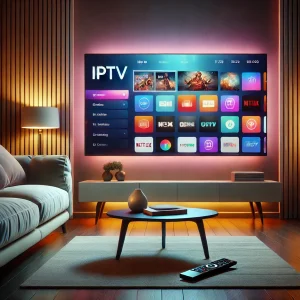What is IPTV? Understanding Internet Protocol Television
In today’s fast-paced digital world, the way we consume television content has drastically changed. Traditional cable and satellite TV are being overshadowed by more flexible and convenient options like IPTV (Internet Protocol Television). But what exactly is IPTV, and how does it work? This blog post will provide a comprehensive overview of IPTV, its features, benefits, and how you can start using it.
What is IPTV?
IPTV stands for Internet Protocol Television. Unlike traditional television formats that rely on cable or satellite signals, IPTV delivers television content over the internet. This means that instead of receiving TV programs through an antenna, satellite dish, or fiber-optic cable, you stream them through your internet connection.
How Does IPTV Work?
IPTV works by sending television signals as data packets over the internet. Here’s a simplified breakdown of how it operates:
- Content Acquisition: IPTV services acquire content from various sources, including live TV channels, on-demand videos, and streaming services.
- Content Encoding: The content is then encoded into digital format and transmitted over the internet.
- Content Delivery: Using your internet connection, the IPTV service delivers the encoded content to your device.
- Content Display: You use an IPTV application on your smart TV, computer, tablet, or smartphone to decode and display the content on your screen.
Types of IPTV Services
IPTV services can be broadly categorized into three types:
- Live Television: Streaming live TV channels as they are broadcasted. This is similar to watching TV through a cable or satellite service but over the internet.
- Video on Demand (VOD): Accessing a library of movies, TV shows, and other video content that you can watch at any time.
- Time-Shifted TV: Catch-up TV services that allow you to watch previously broadcasted shows at a later time.
Benefits of IPTV
- Flexibility: IPTV allows you to watch content on multiple devices, including smart TVs, smartphones, tablets, and computers.
- Variety: Access a wide range of channels and on-demand content from around the world.
- Cost-Effective: Often cheaper than traditional cable or satellite TV subscriptions.
- Interactive Features: Many IPTV services offer features such as pause, rewind, fast-forward, and recording, enhancing your viewing experience.
- High-Quality Streams: Enjoy high-definition and even 4K quality streams, provided you have a fast and stable internet connection.
How to Get Started with IPTV
- Choose an IPTV Provider: Research and select a reputable IPTV service provider that offers the channels and features you want.
- Check Device Compatibility: Ensure that your devices (smart TV, streaming device, smartphone, etc.) are compatible with the IPTV service.
- Subscribe to a Service: Sign up for a subscription plan that suits your needs and budget.
- Install the IPTV App: Download and install the IPTV application on your device.
- Set Up Your Device: Log in to the app using your subscription credentials and start exploring the content.
Conclusion
IPTV is revolutionizing the way we watch television by providing a more flexible, cost-effective, and feature-rich alternative to traditional TV services. Whether you’re interested in live TV, on-demand content, or time-shifted programming, IPTV has something to offer for everyone. By understanding what IPTV is and how it works, you can make an informed decision about whether it’s the right choice for you.
For more information and to explore IPTV services, visit IPTV Smarters.


